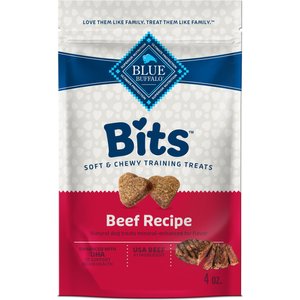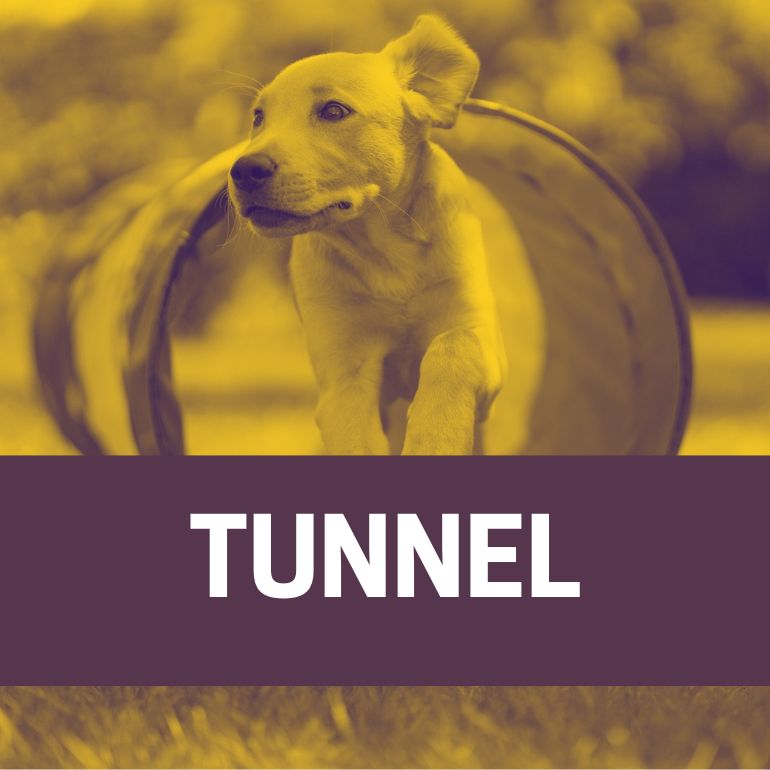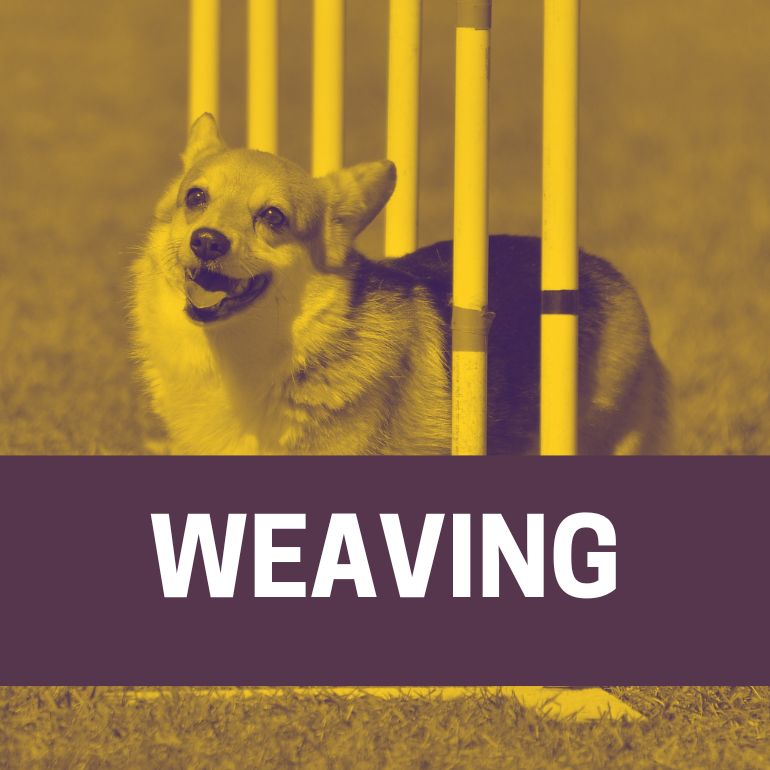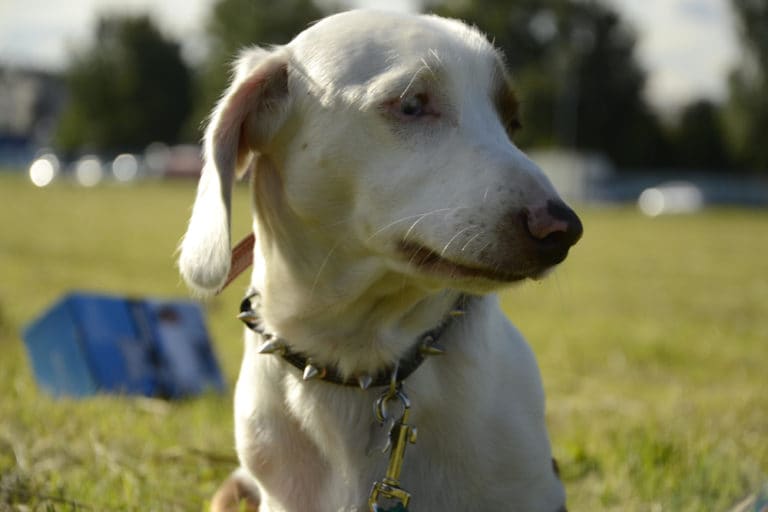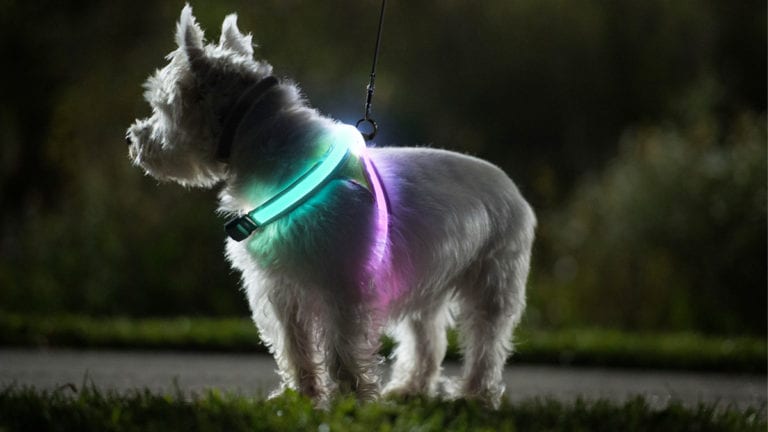One of the fastest growing dog sports in the US, agility sees dogs race through an obstacle course. Guided by their handlers, they learn to run, jump and weave against the clock, having a whole lot of fun in the process.
You’ve probably seen it on TV and thought: “Wow, I wish my dog could do that.” Well, we’re here to tell you: Your dog absolutely can!
Wondering how to train your dog in agility sports? We spoke to the following experts to get the top dog agility training tips:
- Heather Gillihan, CPDT-KA, dog trainer and operations manager for Zoom Room Franchising LLC in Fort Worth, Texas
- Janet Velenovsky, CPDT, CDBC, KPA-CTP, ACCBC, pet trainer and behavior consultant and owner of Kaizen Pet Training & Behavior in Montpelier, Virginia
- Terri Rodriguez, KPA-CTP, dog trainer and agility competitor
- Dr. Sarah J. Wooten, DVM, CVJ, a veterinarian at Sheep Draw Veterinary Hospital in Greeley, Colorado
All About Agility Training for Dogs:
What Are the Benefits of Dog Agility Training?
Even if you never end up in the show ring, there are so many advantages to dog agility training.
- Strengthens your bond. Agility is all about working together as a team. It’ll also teach you how to read your dog and communicate effectively.
- Can boost your dog’s confidence. If your dog’s nervous, agility can gradually help them feel more confident around objects and even other people and dogs.
- Combines physical and mental stimulation.Agility is “awesome exercise for cardio, balance and paw-eye coordination,” says Dr. Wooten. It also mimics natural prey-chasing behavior and requires thinking skills, making it ideal for high-energy dogs.
- Can improve your dog’s focus. Teaching your dog to pay attention to you around distractions can motivate them to stick around you in everyday life.
Is Your Dog Right for the Sport of Agility?
You’ll often see Border Collies and other herding dog breeds on the podium at agility events.
“These dogs tend to watch their handlers for cues and have a strong desire to work,” explains Velenovsky. But “any healthy dog can do agility at some level,” she adds. That includes small dogs, like Chihuahuas.
According to Gillihan, it all starts with a strong relationship between dog and human, as well as high drive, Rodriguez adds.
“The dogs with the fastest times are dogs who can not only jump well,” Rodriguez says, “but can also wrap jumps tightly and maneuver the contact obstacles with ease.”
Before starting agility training, it’s recommended to speak to your vet and follow their advice. Because your dog will need to be physically fit and free from pain, check with your vet that your dog is a healthy weight and they have no issues that might impact their ability to use equipment or move around energetically.
“Of course, older dogs can learn agility sports,” says Dr. Wooten; and courses can be modified to suit elderly dogs’ joints and endurance. But new exercise programs for dogs with pre-existing conditions, like heart disease or osteoarthritis, definitely need discussing with a vet.
It’s not just about your dog’s physical condition, though: Your dog’s mental state is also super important.
See how your pup feels about various textures, objects, sounds and heights by watching them explore at home and out on walks. If they don’t seem to enjoy new experiences, agility may not be the best activity.
If you want to join an agility class, you’ll also need to ensure your dog is calm and comfortable around other people and dogs or get professional help to see if you can work towards that.
So, When Can You Start Dog Agility Training?
“As soon as your puppy comes home,” says Rodriguez. This is when you’ll want to focus body awareness, flatwork and basic cues, like moving next to you, staying and recalling around a variety of distractions.
As for cardio—or, as Dr. Wooten describes it, “hardcore cardio”—and impact training?
“[That] training shouldn’t start until a dog is full-grown,” which is around 12 to 18 months of age, depending on the breed, Dr. Wooten says. “This is because excessive high-impact exercise can negatively impact a young, growing skeleton and joints.”
So, to avoid injury, don’t let your dog jump, weave, or perform other repetitive motions until they’re all grown up.
As always, check with your vet when it’s suitable for your dog to start using agility equipment.
How to Teach Your Dog Agility: Beginner’s Tips
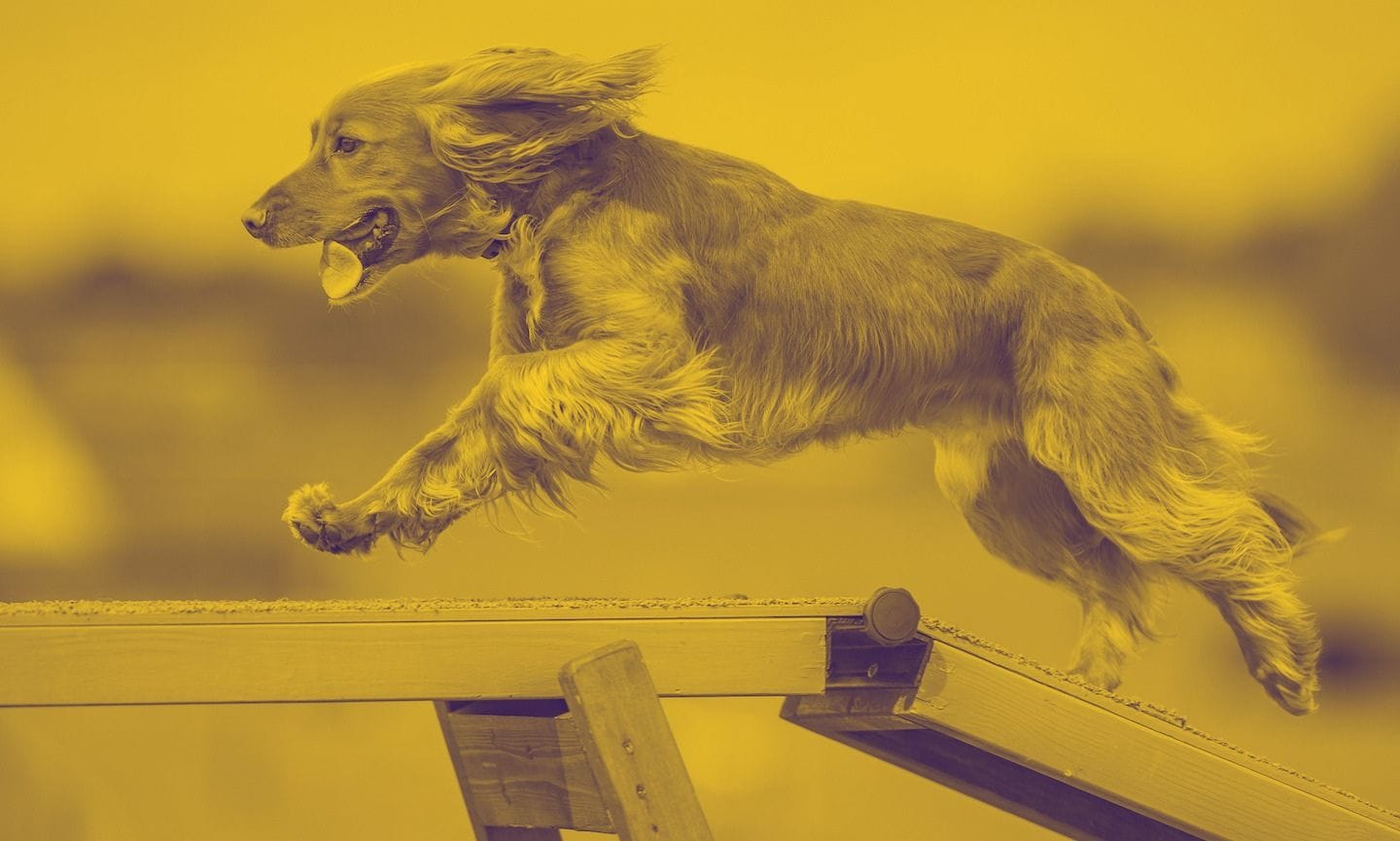
Get Professional Help
First, “find a positive reinforcement training center [which uses a reward, like treats and praise, for desired behaviors] and coach to help you learn the basic skills” and “encourage a positive relationship between you and your dog,” says Gillihan.
You’ll also need professional help for training your dog to navigate agility obstacles that they’ll physically come into contact with on the course. These are called “contact agility obstacles” and include A-frames, teeters and long dog walks. “Non-contact obstacles,” on the other hand, include jumps, weave poles and tunnels.
“These [contact agility obstacles] can be dangerous if not trained properly,” Rodriguez says.
It’s even a good idea to attend some agility trials, chat to people when they’re not busy with their dogs and potentially volunteer to help, says Velenovsky. “You can learn so much just by watching!”
Check out the United States Dog Agility Association (USDAA) or American Kennel Club (AKC) for information on local training classes and agility events.
Use Rewards
All techniques will involve rewarding your dog, so try and figure out what treats and toys motivate them the most.
If you’re using food treats, Dr. Wooten recommends “small, ‘gulpable’” ones, like liver training treats or small pieces of deli meat.
“Something that tastes super delicious but doesn’t require any chewing and isn’t heavy on the stomach,” she says.
Anytime you’re training your dog something new, reward your dog every time they do something right (or nearly right). This will encourage them to do the same thing next time.
As your dog strengthens their agility skills, you can gradually phase out rewards. But you should still reward your dog every so often. After all, you don’t work for free—and neither should they!
Practice Skills at Home
If you do want to start teaching some skills by yourself, check out the following home agility training tips for dogs.Jump
The jump skill is exactly that: A dog jumps over a pole (or broomstick if you’re DIYing your course!) or through a suspended ring or tire. The obstacles themselves are also called jumps. So, the dog jumps over or through jumps; that’s not confusing at all, right?
If your dog’s old enough to try jumping, you don’t need to buy equipment, like tire jumps.
“You could build a makeshift jump with chairs and a broomstick,” says Gillihan. You can even use your own legs to start off with.
Just make sure whatever you create isn’t too high and that the surface you’re training on isn’t too hard or slippery. Rodriguez advises starting with the jump (again, whatever the dog will jump over or through) on the ground, then gradually raising it as your dog becomes more confident.
@maxwell.the.mutt testing how high he can jump🫶 (idea: @codie_alfie_the_springes) he can prob go higher but hes too scared to :/ he did great tho! #healthadepopit #maxwellthemutt #dogagility #dogjump #agilitydog #agilityjump #mutt #smalldog #dogcommunity #dc #dogfyp #dontletthisflop #foryou #fyp #fypシ #smallesttotallest #jumptest #fun #dog #followmepls ♬ original sound - 𝙢𝙖𝙭𝙬𝙚𝙡𝙡🐕
To teach your dog to jump:
- Gently restrain your dog on one side of the jump or ask your dog to wait.
- Toss something they love, such as a treat or toy, on the other side.
- Release your dog. You may need to go over the jump with them to help them out.
- Repeat.
- When your dog is successfully doing the above, say “jump” as your dog jumps. Repeat a few times.
- Now stop tossing the reward over the jump. Release your dog, say “jump,” and give the reward after they’ve jumped.
Tunnel
To teach your dog to run through a tunnel:
- While your dog’s exploring one end of the tunnel, run to the other end or have another person there, encouraging and rewarding them when they make it through.
- If they’re still unsure, make it extra fun by sticking your head in the tunnel, tossing treats, and even going through yourself if it’s big enough!
- When they’re reliably choosing to go through, start walking towards the tunnel, giving a hand motion towards it, and saying a cue such as “tunnel” as they go through.
- Reward every time.
In the future, you can use your cue as they approach the tunnel to ask them to go through.
Weave Poles
The weave pole obstacle is a tricky one. It involves your dog zigzagging through a set of poles, typically 12 of them, spaced 24 inches apart. And if they complete all 12 poles without skipping one, they’ve mastered the art of weave poles.
To start, you’ll need (you guessed it) a set of weave poles. Your dog will also need to be old enough to learn the tricky art of weaving (again, around 12 to 18 months). Here’s a simple way to start training it:
@officialgooddog Way to go @Stephanie and dogs! #agilitytraining #weavepoles #dogagility #dogagilitytraining ♬ Athletic Meet "Heaven and Hell" (No Introduction) - Shinonome
To teach your dog weaving:
- Put the poles in one straight line, 24 inches apart.
- Move every other pole about a foot away from the line to create a channel that your dog can walk straight through. You may need to show them at first. Reward at the end.
- Add in a verbal cue such as “weave” as your dog runs through the channel created by the poles.
- When your dog can move through the channel on cue, gradually move the poles closer together so that they’re slowly introduced to weaving around them.
- Repeat the above process every time you move the poles closer to the original line.
- Once the poles are back in a straight line, tilt the poles at an angle (the first tilted to the left, the next tilted right, the next titled left, and so on), and as your dog walks through, continue to use the “weave” command.
- Once your dog is used to the tilted poles, straighten the poles.
Keep Sessions Short
As with most training, shorter sessions are better, Velenovsky says, adding that training a dog in three- to five-minutes intervals, for a total of about 15 to 20 minutes of training, is plenty.
“In between, make sure they get a chance for water, rest and maybe a bit of play,” Velenovsky says.
Just remember: Agility should be fun for your dog.
“Stop the session before [your] dog wants to stop,” Rodriguez says. If they achieve a big step, “quit there and give lots of praise and treats” so they can walk away feeling accomplished.
The Lowdown
When it comes down to it, agility can be a great tool to provide exercise, brain stimulation, and help to build a stronger bond with your dog, Rodriguez says.
“But [your] dog should enjoy the tasks at hand or feel some sort of accomplishment after playing,” Rodriguez says. “If you watch your dog closely and read their body language, they will tell you if it is something they are enjoying.”
If you and your dog are into it, you can work towards agility competitions, but there’s no pressure to reach that level. When you keep trainings fun, it will help keep both you and your dog motivated. And if your dog doesn’t seem that keen or they’re not physically able, why not try another activity such as nose work? This is a sport where dogs sniff out different scent, and it’s another great way to learn how to improve communication between you and your canine companion! Plus, it’s fun—and who doesn’t want that?
More Dog Training Tips and Tricks:
Share:

